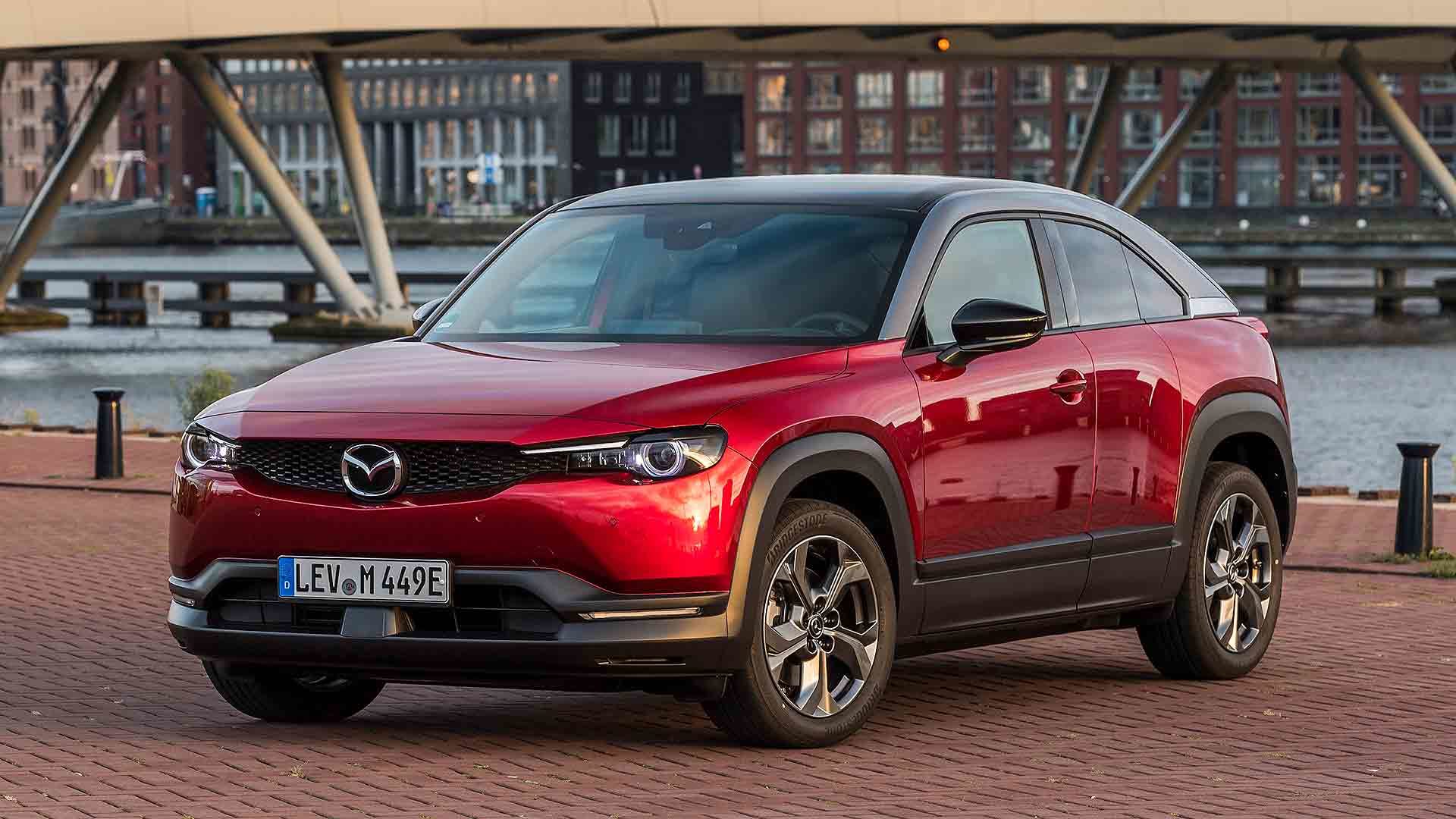
Think all new cars are the same? Not if they’re electric. The chance for a clean sheet approach is inspiring car makers to once again think outside the box: see the Jaguar I-Pace, Honda e, Porsche Taycan – and now, the Mazda MX-30.
Always a company that likes its engineers to innovate, Mazda has jumped at the chance to make its first ever modern EV genuinely stand out. On paper, it’s a family-sized crossover SUV-style vehicle. In the metal, it’s so much more than that.
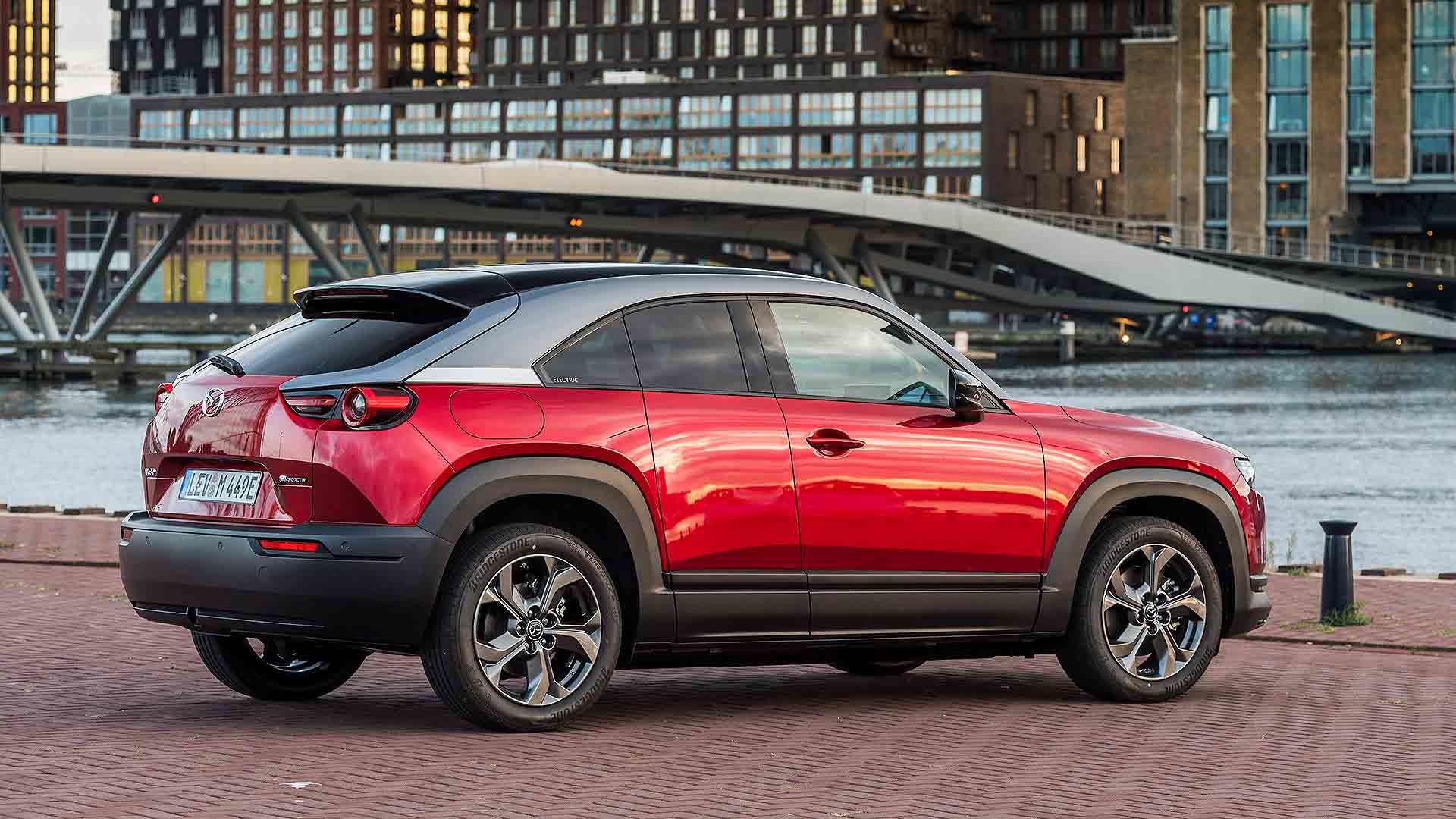
Inside, too, it’s anything but ordinary. It boasts showroom appeal by the bucketload, particularly as it comes with a surprisingly accessible list price from just over £25k once the Plug-in Car Grant is subtracted.
There’s just one barrier to overcome. This is a modern pure EV with a WLTP driving range rather less than we’re becoming used to: just 124 miles from its 35.5kWh battery. Even the Vauxhall Corsa-e can do over 200 miles.
This is intentional, says Mazda. Bigger batteries mean more CO2 emitted during production, and it takes large EVs with powerful batteries years to simply offset this, before you even start to benefit from zero-CO2 driving miles. The MX-30 is a greener choice, with ‘right-sized’ batteries, and fine for most people because the daily average mileage is easily covered by its full-charge capacity.
Want more range? Then hold on, because a range extender version is coming – complete with tiny rotary engine providing the power.
Another advantage of a smaller battery is a lower price tag. Post-Plug in Car Grant, the MX-30 costs from £25,545. This First Edition is priced from £27,495. Mazda says that compares favourably with rivals such as the Mini Electric Level 2 (£26,900), Nissan Leaf N-Connecta (£28,145) and the Renault Zoe Iconic (£28,495). It certainly seems positive to us.
Already anything but the same, then. So, let’s find out what it’s like in practice.
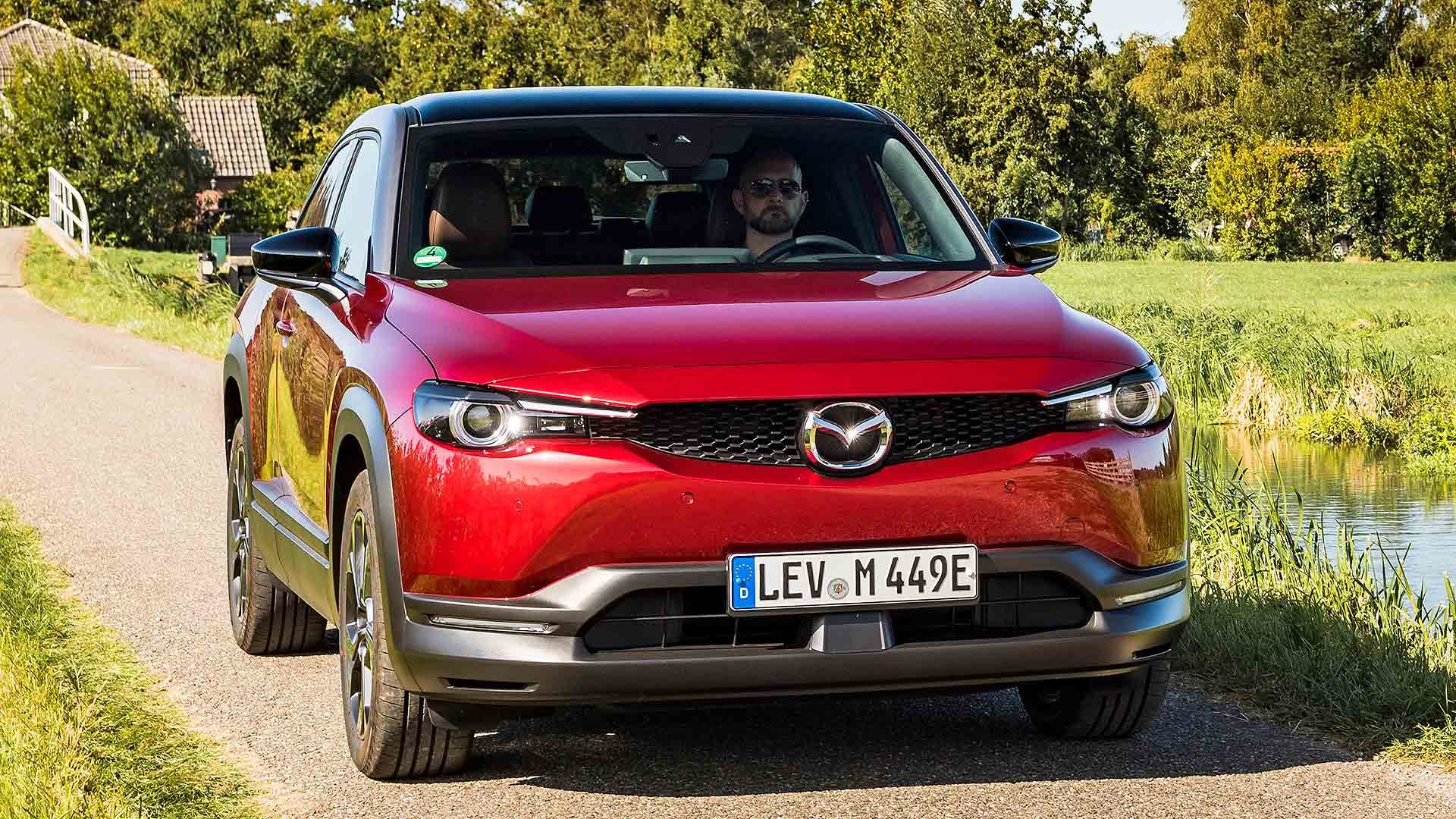
Driving the Mazda MX-30
The Mazda MX-30 is bigger than you might think. Because of the MX-5 two-seat roadster-inspired name, you may think it a more compact EV, like the Honda e. It’s actually Volkswagen Golf-sized: 4.4 metres long and 1.8 metres wide. It has five seats and – look closely – has five doors.
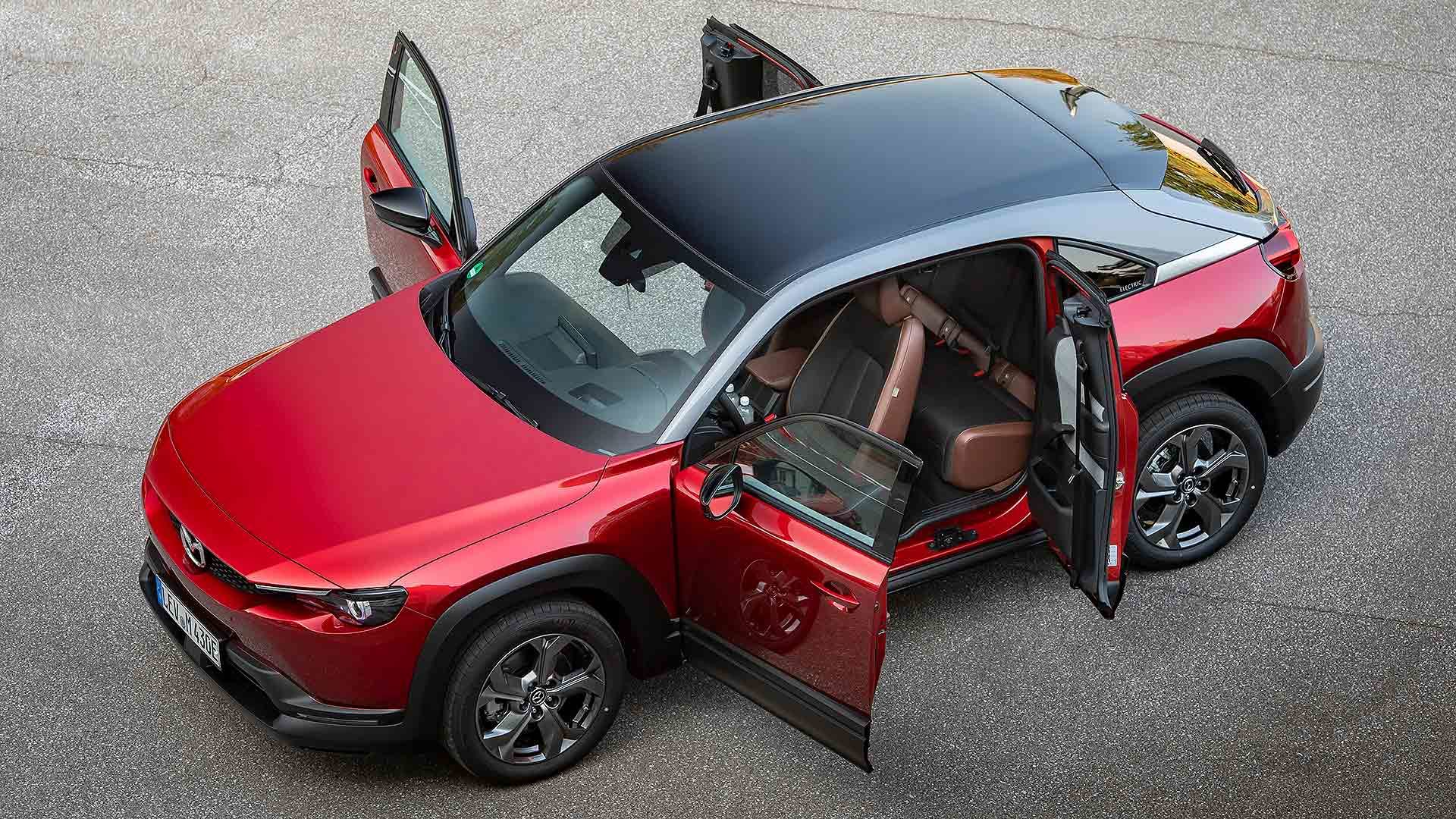
Just like the retro Mazda RX-8, the rear doors are hinged at the back. They can only open when the front doors are opened first, and both doors swing out wide. The rear doors are indeed tiny, but there’s no central pillar in the way, so it’s easier to step in than you might think – even easier if you press a button on the back of the driver’s seat, which slides it out of the way automatically.
Room inside is not Golf-like, but it’s reasonable. The bigger gripe is that those in the rear feel rather perched, and it’s gloomy back there because the dual side windows are both tiny. Genuine family-friendliness is debatable, but OK for short trips. Be careful you don’t trap your feet under the front seats as you step out, too.
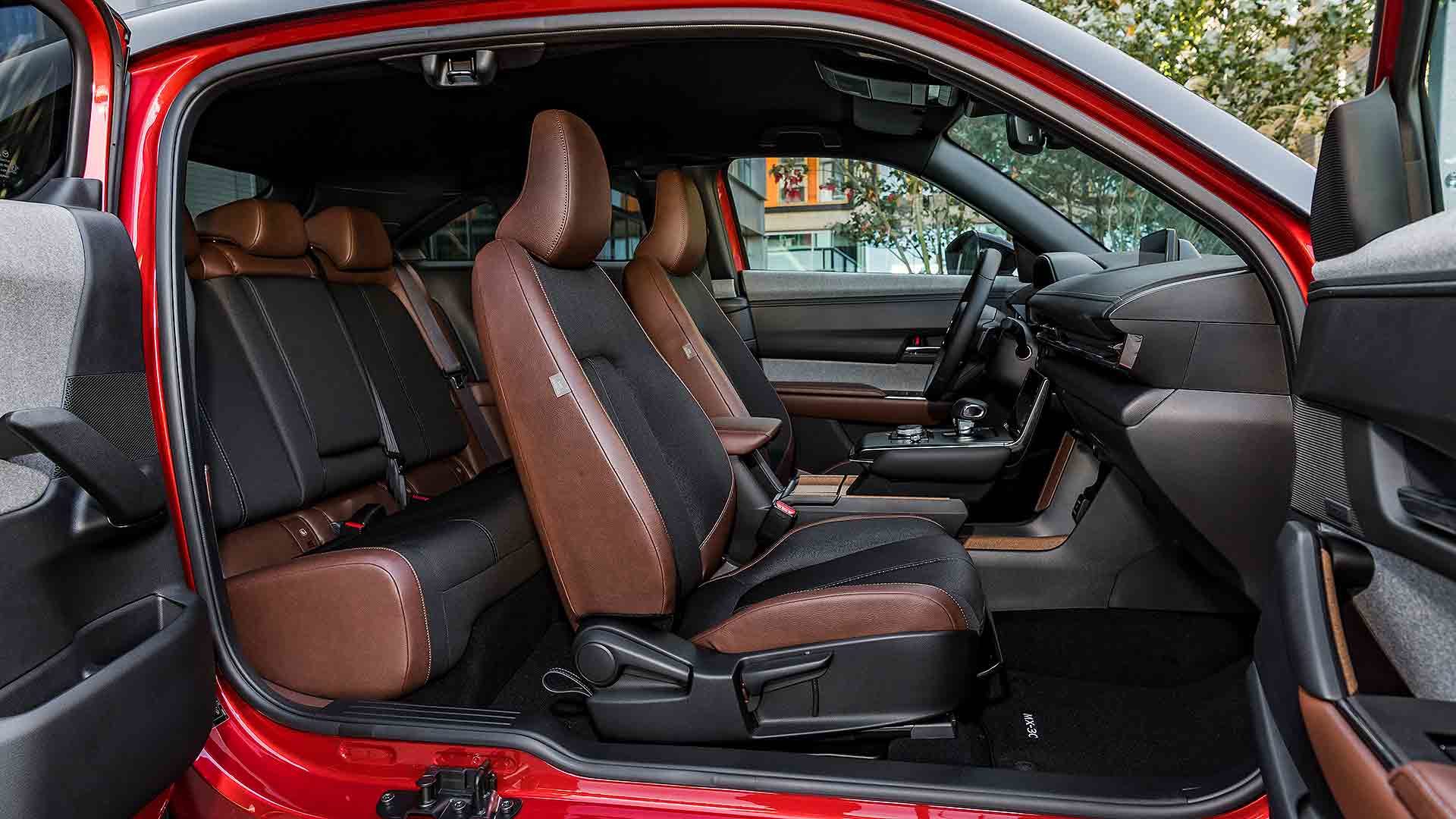
The boot is a good size, 366 litres with the seats up (a slightly smaller 341 litres if you have the Bose audio system – but this is a silent-running electric car, so surely you must?) and a long, wide, flat space to boot. Fold the rear seats and it grows to 1,171 litres.
That’s a lot of sensible talk for such a novel car. So, let’s step back and take a look. Mazda says the design is ‘human modern’, tough and practical SUV-like on the lower half, stylish and expressively coupe-like above. The inverse of wearing a shirt and shorts for work-at-home Zoom calls, if you like.
Mazda offers regular, two-tone and three-tone paint combinations: Soul Red with black roof and dark grey side panels is particularly striking, although so it should be given its £1,800 price tag.
The interior genuinely has the appearance of a luxury car – one that, like the Lexus RC 500, is proud of its Japanese roots. Dig deeper and you’ll find more hard plastics and shiny surfaces here than in a Lexus, but that’s nit-picking, because altogether it’s a superb interior.
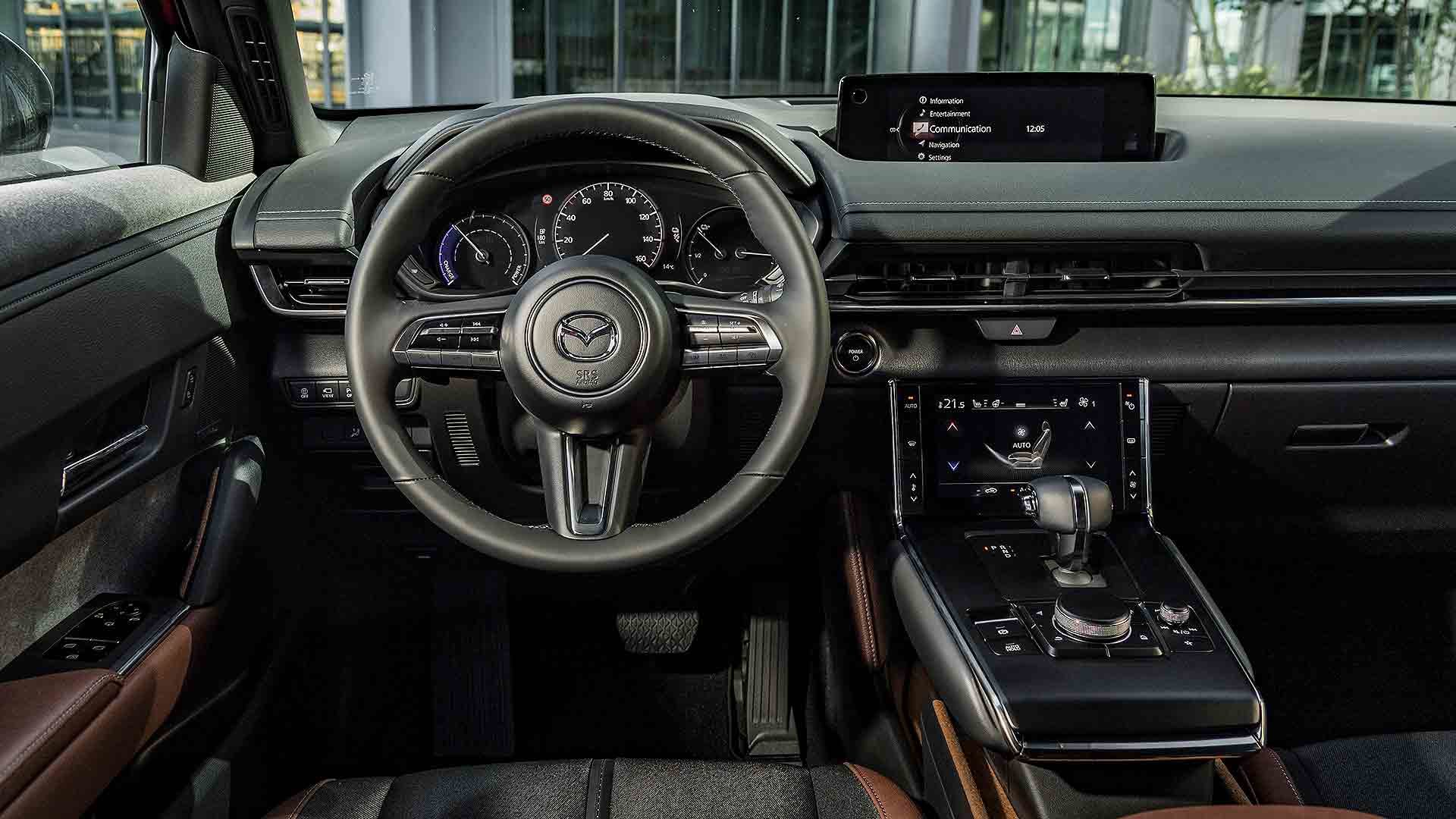
You sit high, on enveloping seats, arm resting on a wide centre console and elbow on a beautifully padded door panel. The big, round steering wheel feels like an MX-5’s, and the digital displays look sophisticated. The auto gearlever operates in a conventional way and Mazda’s first touchscreen centre display for the climate control is easy to use (with ‘hard’ keys for temperature control, praise be).
The highlight has to be the cork trim. Yes, cork – it’s what Mazda started out producing 100 years ago. It adorns the door handles, the cupholder covers and the large stowage area beneath the centre console. It’s a lovely, tactile touch and looks terrific. Again, genuinely different to anything else out there.
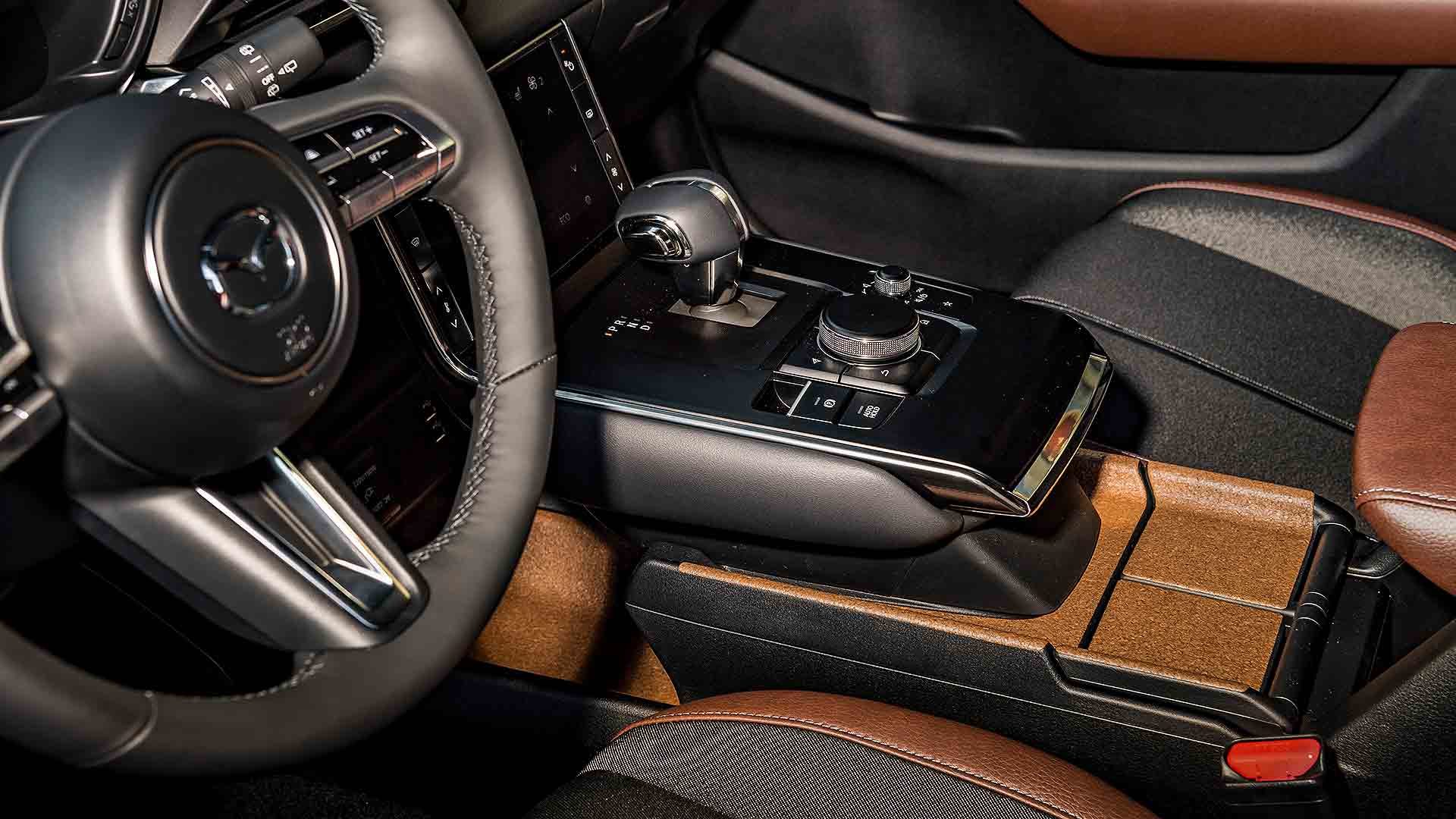
Once underway, first impression is that the suspension is surprisingly supple. There’s lots of wheel travel and it’s softer than expected, giving a particularly cushioned ride at in-town speeds. It rides quietly too, and slightly slower and more ‘twirly’ steering than some sportier rivals adds to the relaxing, easygoing feel.
This does mean handling has a bit more lean, tipping into corners a little more readily than more firmly setup alternatives. You do get used to it, in the same way you get used to the friendly softness of an MX-5 sports car, and the low centre of gravity gives a good feeling of stability once in corners.
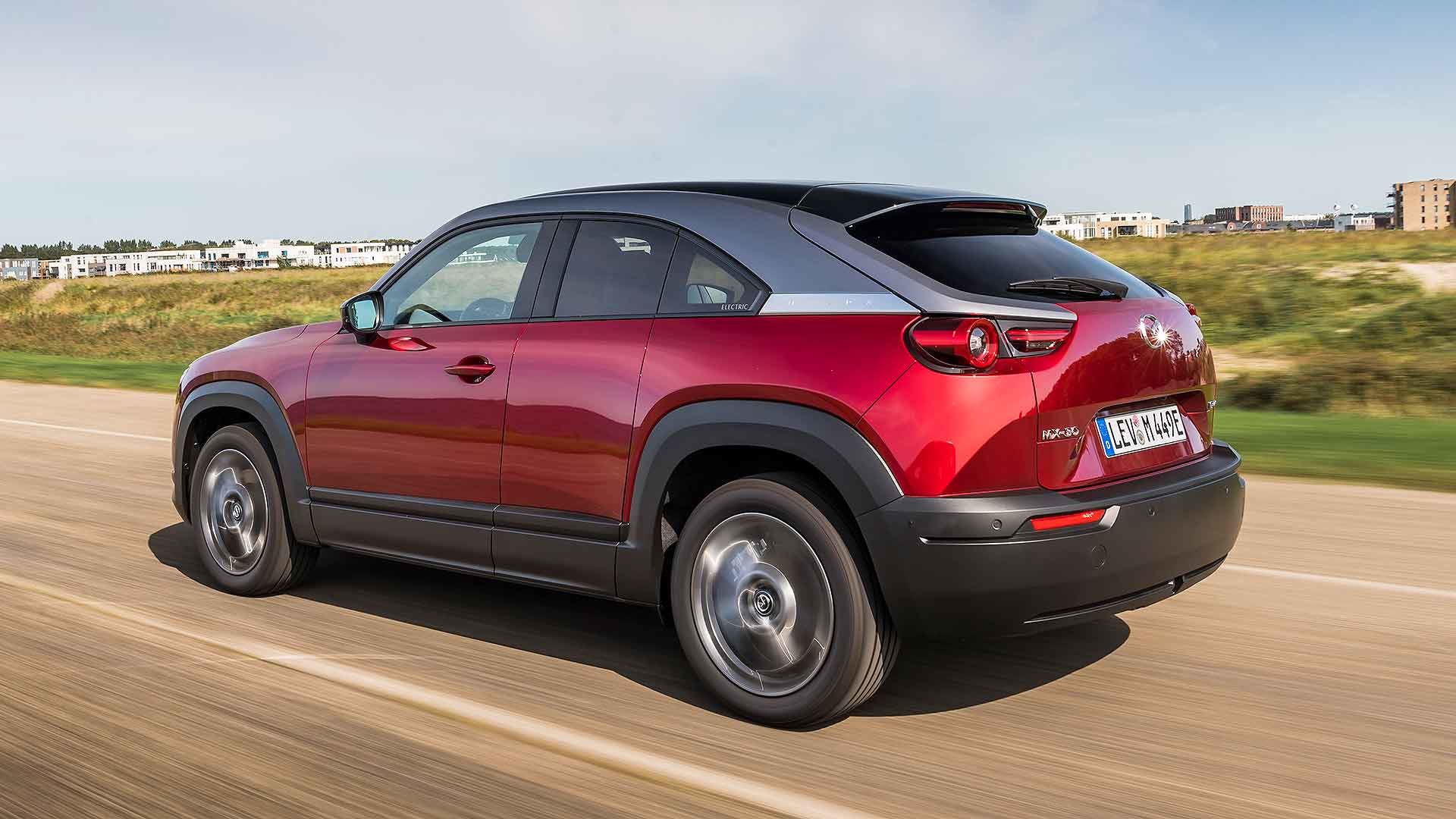
The most surprising aspect of driving the MX-30 is actually how easy it is to break traction at the front wheels when accelerating. Admittedly, we drove it in wet weather – but the eagerness with which the front tyres could scrabble, and the struggles the traction control seemed to have in managing it, were surprising (albeit a trait not uncommon to front-wheel drive electric cars).
Tumultuous traction aside, acceleration isn’t overly dramatic either. Zero to 62mph takes 9.7 seconds – remember, even a Vauxhall Corsa-e does it in 8.1 seconds – and you sometimes feel the MX-30’s 1,645kg kerbweight when accelerating uphill. You need a bit more right foot than you might expect.
Mazda is pleased with the conventional automatic gearshifter fitted to the ‘floating’ centre console (below which is a tremendous amount of cork-lined stowage). There are paddles on the steering wheel too, for varying the regenerative braking through five levels. It could be more intuitive and the icon on the dash is useless, but it works better with practice.
Otherwise, it’s a relaxing drive, one that’s refined and compliant at speed. It feels peaceful and premium, aided by those beautifully supportive seats, and a ride that continues to be cushioned and well-planted. It’s a car that’s rich and pleasing to drive in town, but one that continues its high standards at higher speeds.
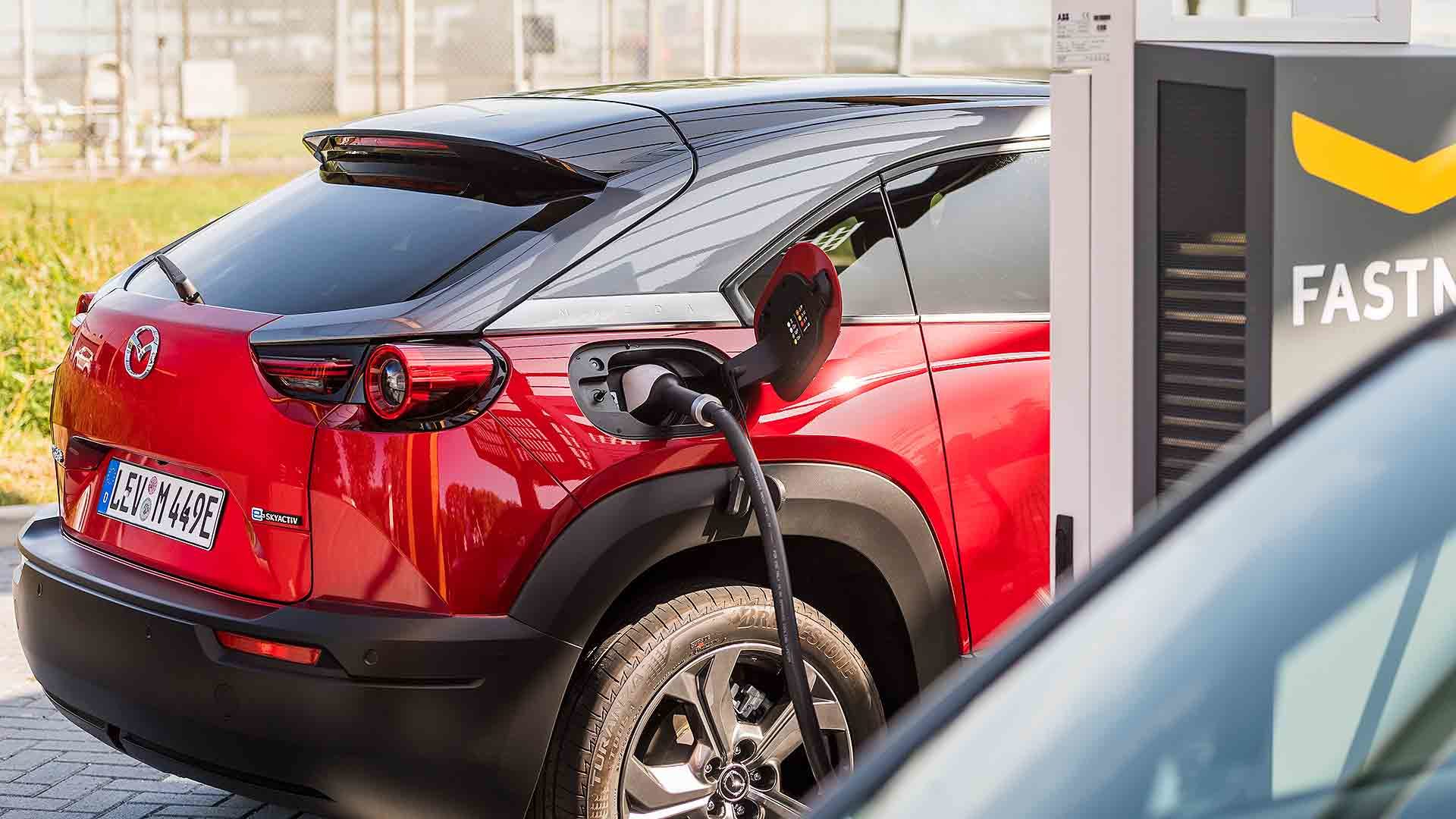
What about real-world range? We started off with a 96 percent full battery, and an estimated driving range of 108 miles. By the end of a test route stretching just over 40 miles, it read 49 percent full, with 56 miles remaining. Yes, we were speedy in places, but cruised at the speed limit in others, and traipsed around town gently.
Owners are likely to be looking for a charge around 90 miles after setting out on a long trip, making good use of the standard 50kW CCS fast-charging capability (20 percent to 80 percent recharges in 36 minutes). Mazda insists it won’t be an issue, as the average daily mileage is a fraction of the battery’s capacity. But only you can decide if the MX-30’s downsized battery is an insurmountable compromise or not.
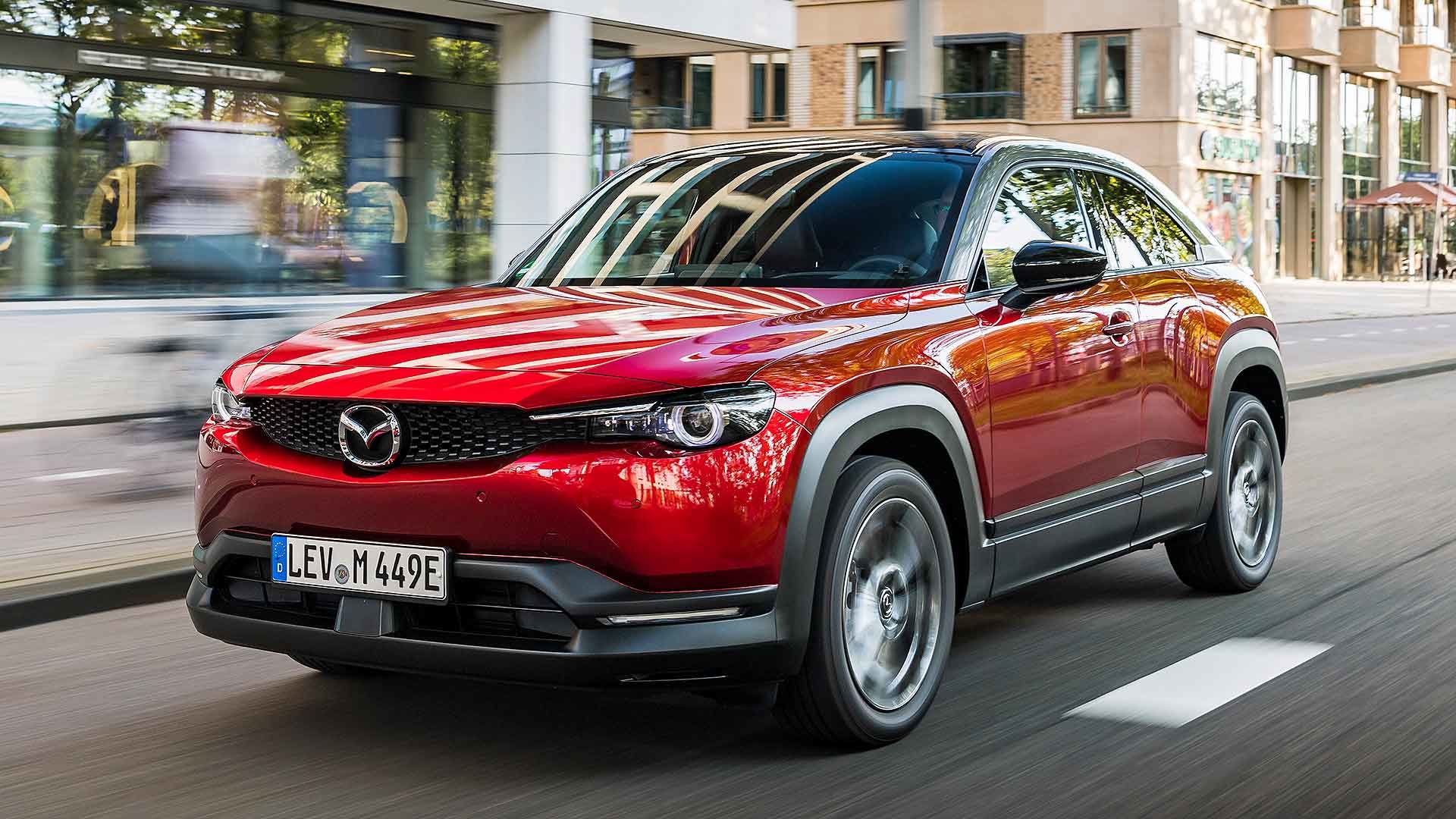
Verdict: Mazda MX-30
The Mazda MX-30 is a charismatic and distinctive electric car. It is different to anything else out there, in terms of how it looks, its interior, how it drives and how it approaches electric motoring. The scrabbly front wheels surprised us, but that’s not a deal-breaker.
The biggest question is whether the range is enough, given the lower price point it has facilitated. For that, potential buyers, it’s over to you. Our take? We hope so, because characterful cars like this deserve to succeed – particularly ones with as many highlights as the Mazda MX-30.
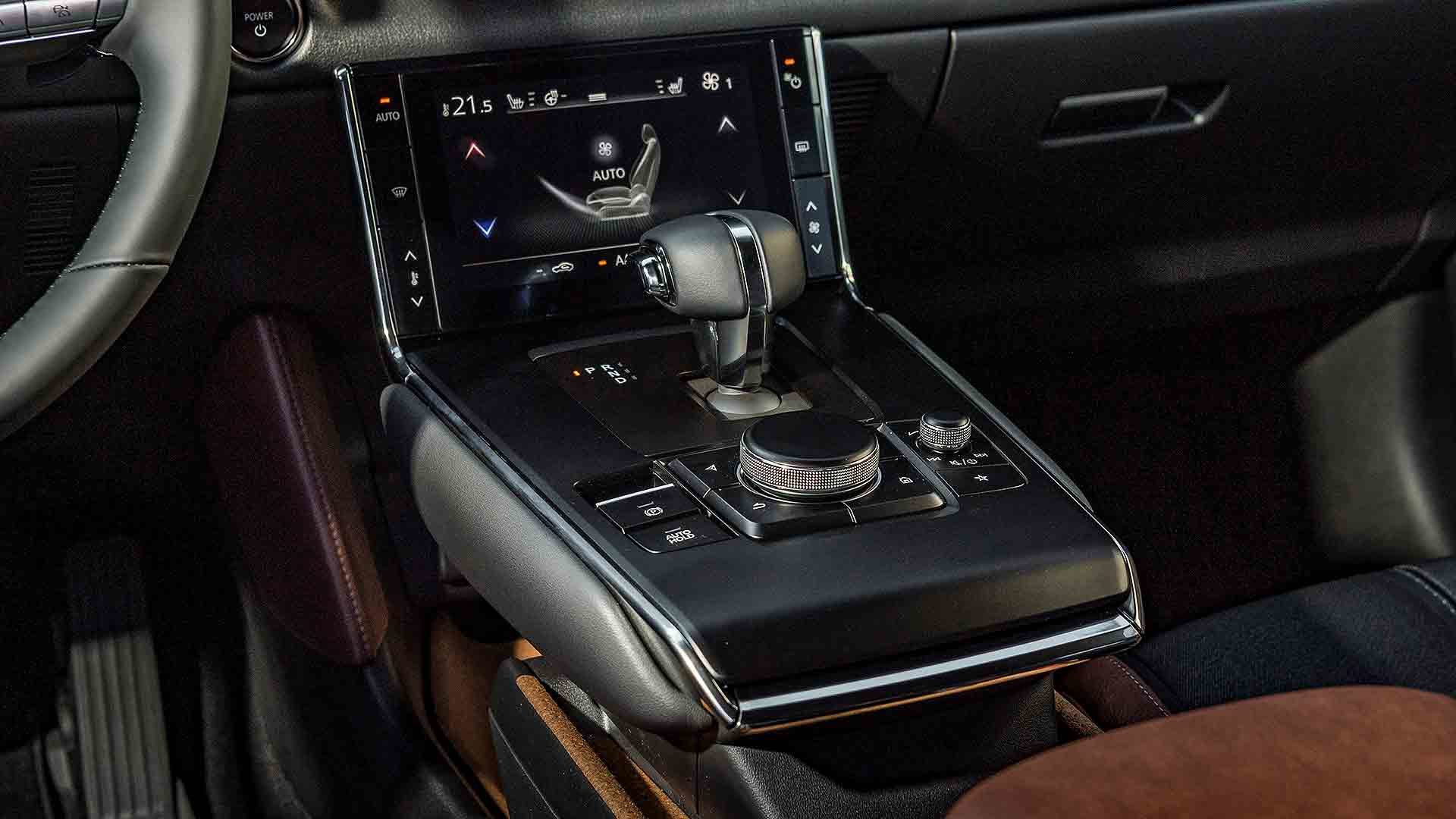
ALSO READ
Porsche Taycan Turbo (2020) review